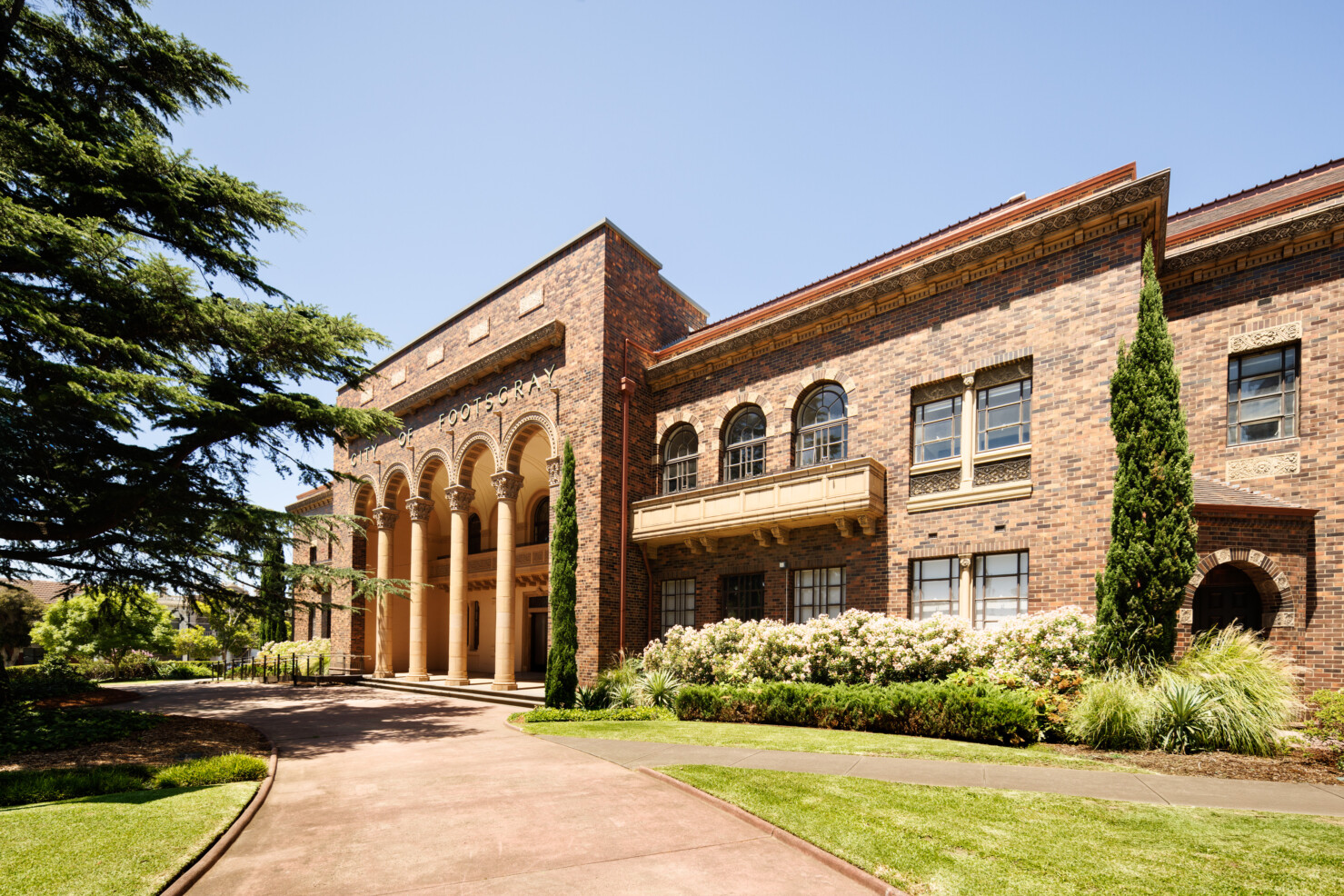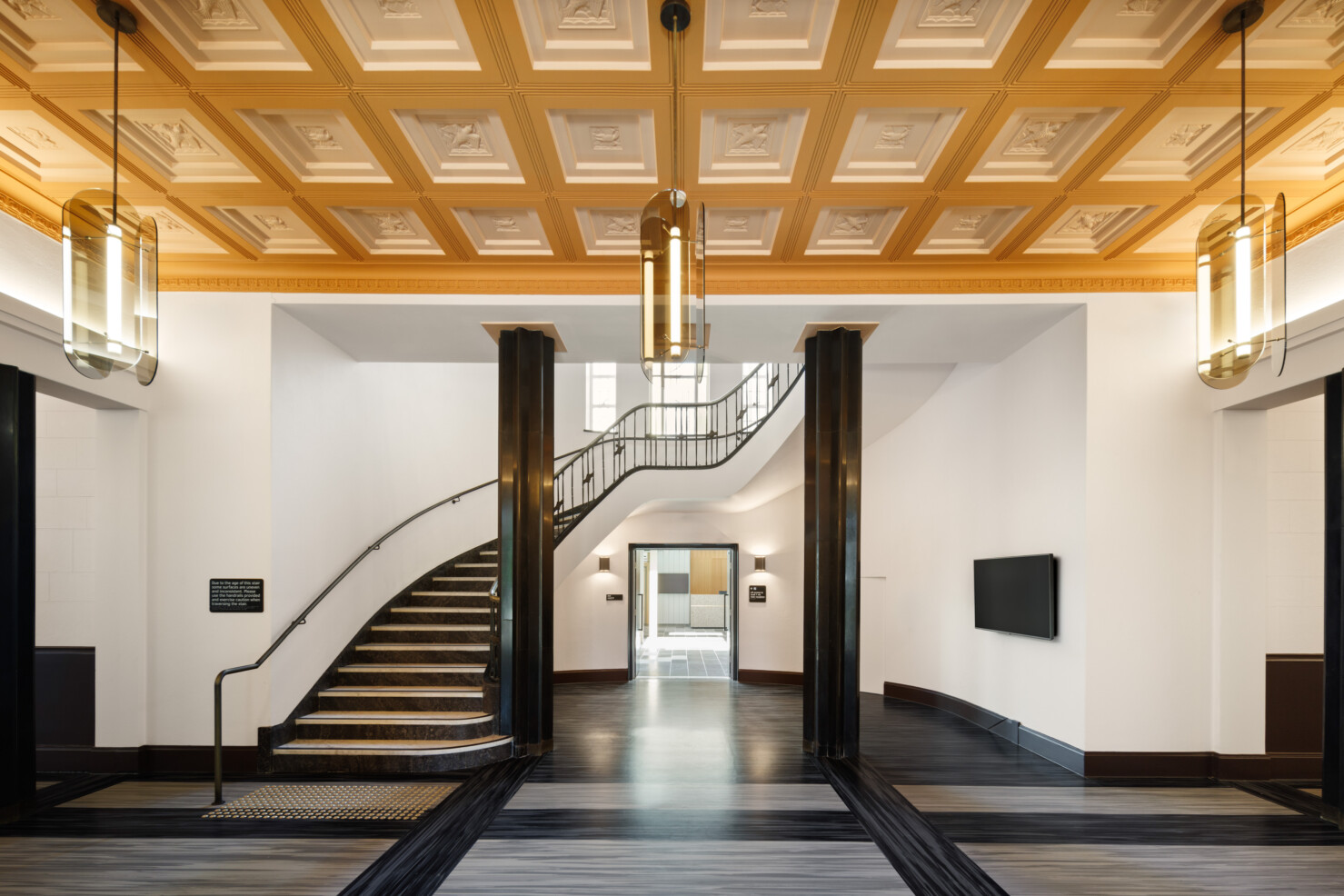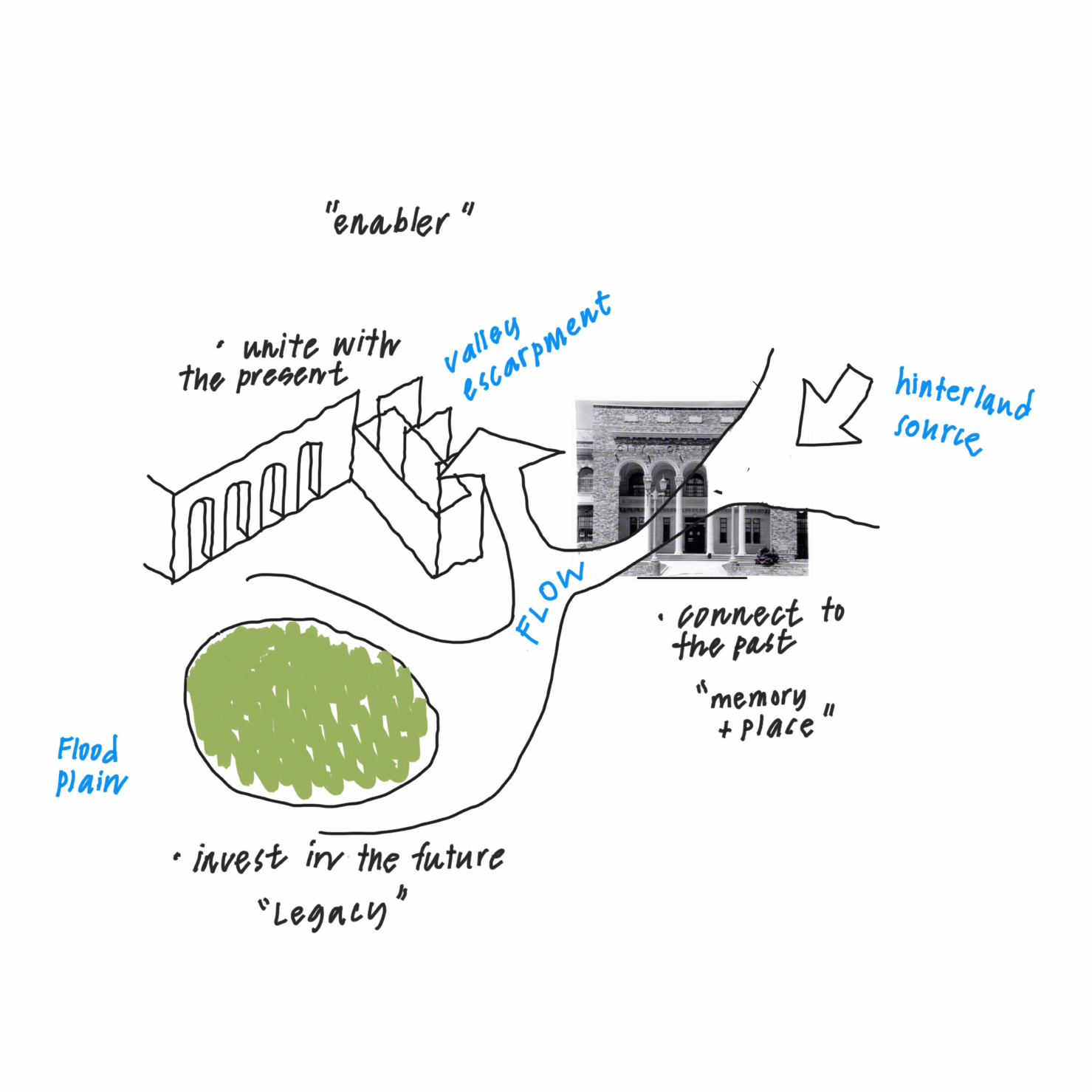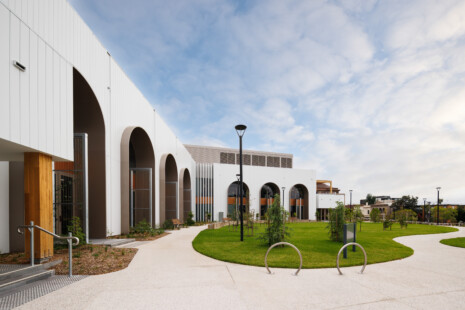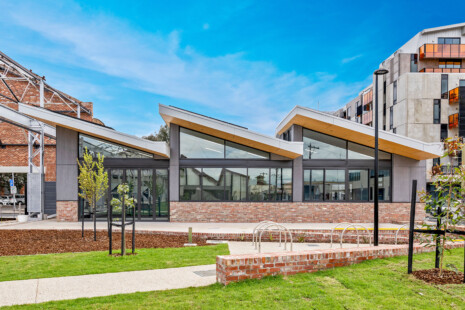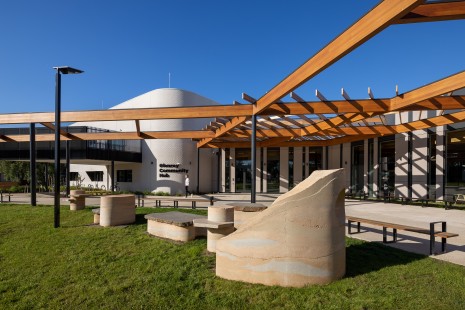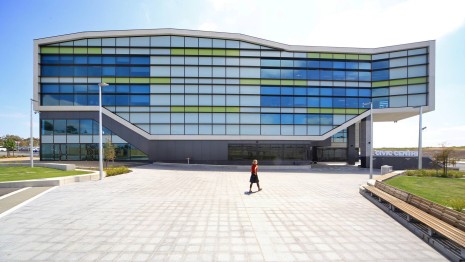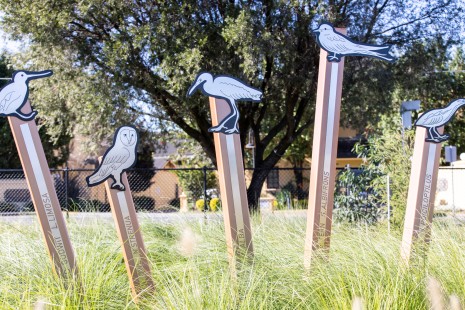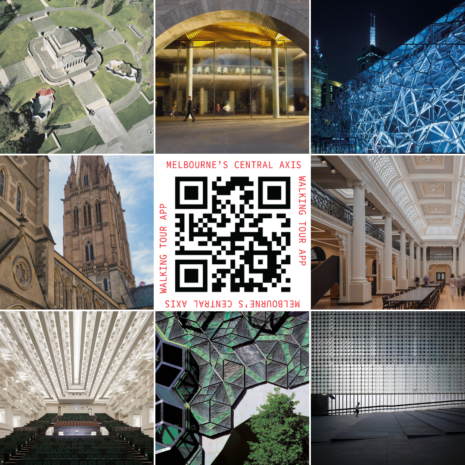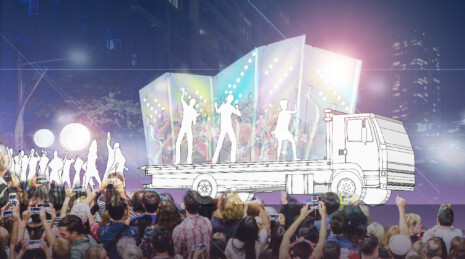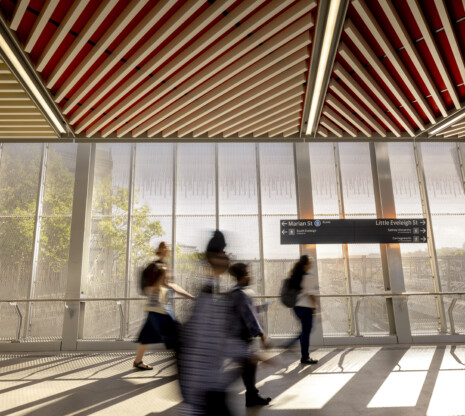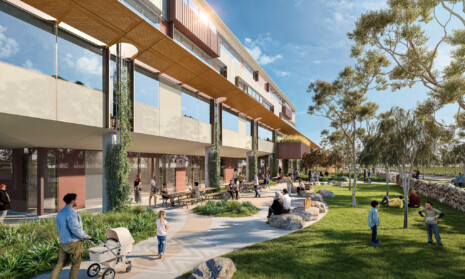
The City of Maribyrnong’s Town Hall Renewal Project
The Maribyrnong Town Hall, formerly Footscray Town Hall, stands out as one of the most impressive buildings of its style in Victoria. Embellished with decorative arches of varying scale, this American Romanesque-style building, dating from 1936, is the work of lesser-known architect, Joseph Plottel. For decades, this architectural gem was largely used by council staff, with the public only appreciating its fine architecture from the street. However, this latest incarnation, designed by Designinc, has delivered to the council and residents a new contemporary ‘chapter’, one inspired by the past.
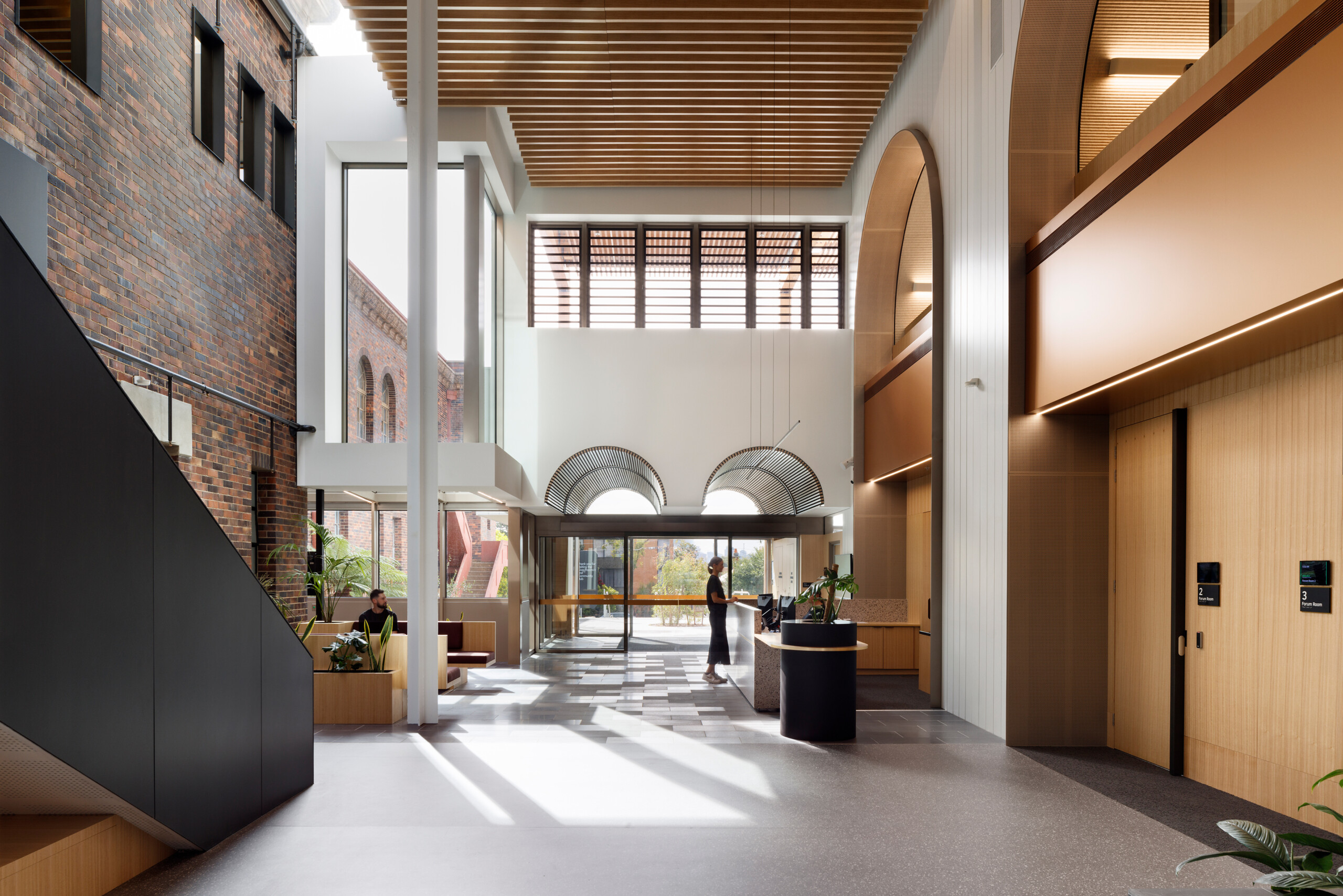
When Designinc first inspected the Maribyrnong town hall, it had been carved up in a fairly ad hoc manner. The main thoroughfare, with its impressive ceilings and decorative embellishments, was primarily used for offices, with rudimentary partitions that did little for either Plottel’s great design or staff morale. In a post covid world, it takes more than an iconic building, to attract staff.
While the ‘bones’ of the original design remained, the building required substantial restoration and conservation, together with addressing current building codes and standards, including access concerns. Designinc worked closely with heritage consultants GJM Heritage and also Purcell Architects meeting the new standards as well as peeling off the layers that came with decades of neglect. Some features, such as the marble treads of the staircase were only revealed when the carpet was removed, as was the rich burl veneer panelling in one of the more formal rooms, discovered under layers of paint. Given the high standard of restoration expected by Heritage Victoria and council’s restrictive allocated budget, there were challenges from the outset. Although overcome by DesignInc, it came with strict guidelines outlined in the Cultural Management plan (CMP).
Some of the main changes above the restoration work involved reconfiguring spaces, with some being opened up completely to reveal the original proportions of the grand building – removing glass-walled additions and providing appropriate amenities where required. Council’s brief to DesignInc also included the provision of an entirely new office and administration wing, separate to the council chambers, located in the original building. One of the driving forces in the design was not only to respect and enhance Plottel’s design, but also to provide a 6 Star Green Star wing that offered work spaces that were well-ventilated and naturally illuminated – with a strong connection to the outdoors. For this project, the team worked with landscape architects Outlines. Rather than accommodate the entire site (a 1980s-additions were removed), the new wing only covers approximately one third of what was demolished. Outlines took inspiration from the nearby Maribyrnong River, creating sinuous paths that extend from outside to the interior spaces.
One of the driving design cues for DesignInc were the hierarchical series of arches created by Plottel which have been reinterpreted in the new wing. Separated from the original building by a staircase lit by skylights, the new L-shaped wing embraces a prominent corner site (Hyde Street and Lawson Place). Pivotal to the design is what’s referred to as the ‘forum’, a gallery-like space that takes on the characteristics of an indoor street. Complete with built-in banquette-style seating and a 7-metre-high timber-lined acoustic ceiling, the forum also provides a ‘breathing’ space between the past and present. It was conceived for informal catch ups by colleagues or residents visiting the council offices. One of the problems with the 1980s extension was that it literally ‘slammed’ into the original building, masking its history, rather than celebrating it.
Pivotal to the design of the interstitial space are arched apertures over the two levels, deep rather than shallow to conceal services such as air conditioning. These arched nooks also function as more intimate spaces for council staff to meet either in person or for zoom meetings. In contrast to the former arrangement, where staff were pocketed into cubicles, the new arrangement provides predominantly open plan workspaces on the first level of the new wing. DesignInc also included a couple of glass-front offices that can be used for more private discussions.
With the first floor given over to offices for council staff, the lower level was conceived for the public, not only ratepayers, but also the broader community. Here, one large space was provided that can be easily separated into three if required (the entire space can accommodate up to 200 people). Featuring timber-lined barrel-vaulted ceilings that extend to the soffits, the idea was to acknowledge the generous and rich use of materials used in the 1930s building, while still adhering to the allocated budget.
What was a fairly tired and underperforming building has been accelerated well into the 21st century. Featuring light-filled spaces which are naturally ventilated and drawing on a number of biophilic principles, the Maribyrnong Town Hall is now a place where people enjoy both working and visiting. Complete with timber pergolas, generous outdoor terraces and fluid work and meeting areas, it’s also well-connected to its illustrious past – with the original name of the building still displayed across the façade. The ‘Footscray Town Hall’ is a continual reminder of how the municipality has evolved over the past century.
Pivotal to the design of the interstitial space are arched apertures over the two levels, deep rather than shallow to conceal services such as air conditioning. These arched nooks also function as more intimate spaces for council staff to meet either in person or for zoom meetings. In contrast to the former arrangement, where staff were pocketed into cubicles, the new arrangement provides predominantly open plan workspaces on the first level of the new wing. DesignInc also included a couple of glass-front offices that can be used for more private discussions.
With the first floor given over to offices for council staff, the lower level was conceived for the public, not only ratepayers, but also the broader community. Here, one large space was provided that can be easily separated into three if required (the entire space can accommodate up to 200 people). Featuring timber-lined barrel-vaulted ceilings that extend to the soffits, the idea was to acknowledge the generous and rich use of materials used in the 1930s building, while still adhering to the allocated budget.
What was a fairly tired and underperforming building has been accelerated well into the 21st century. Featuring light-filled spaces which are naturally ventilated and drawing on a number of biophilic principles, the Maribyrnong Town Hall is now a place where people enjoy both working and visiting. Complete with timber pergolas, generous outdoor terraces and fluid work and meeting areas, it’s also well-connected to its illustrious past – with the original name of the building still displayed across the façade. The ‘Footscray Town Hall’ is a continual reminder of how the municipality has evolved over the past century.
Written by Stephen Crafti
Stephen Crafti is a specialist in contemporary design, including architecture, furniture, fashion and decorative arts.
